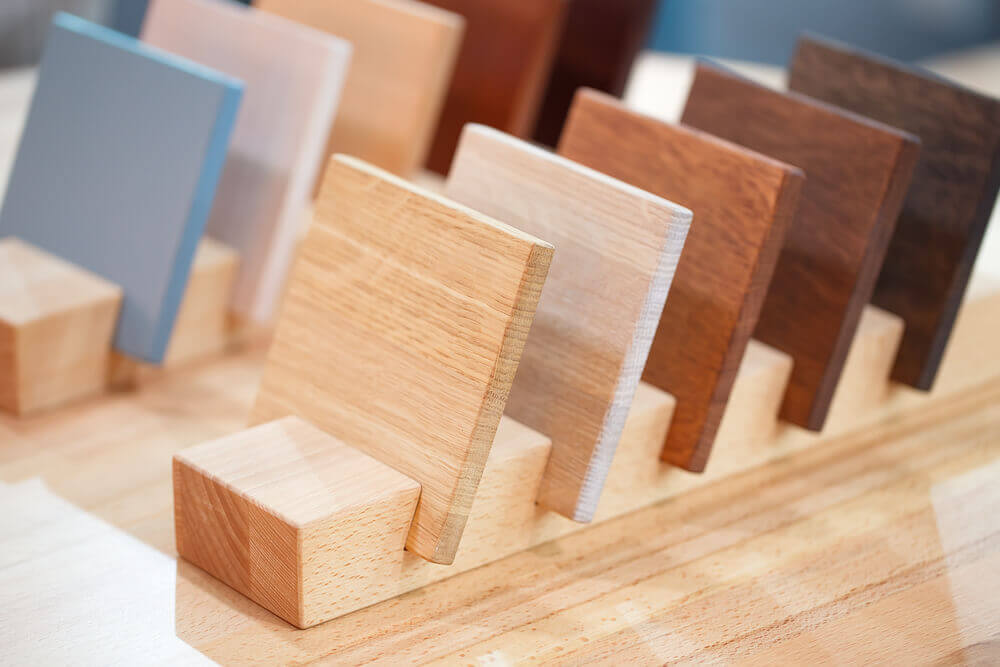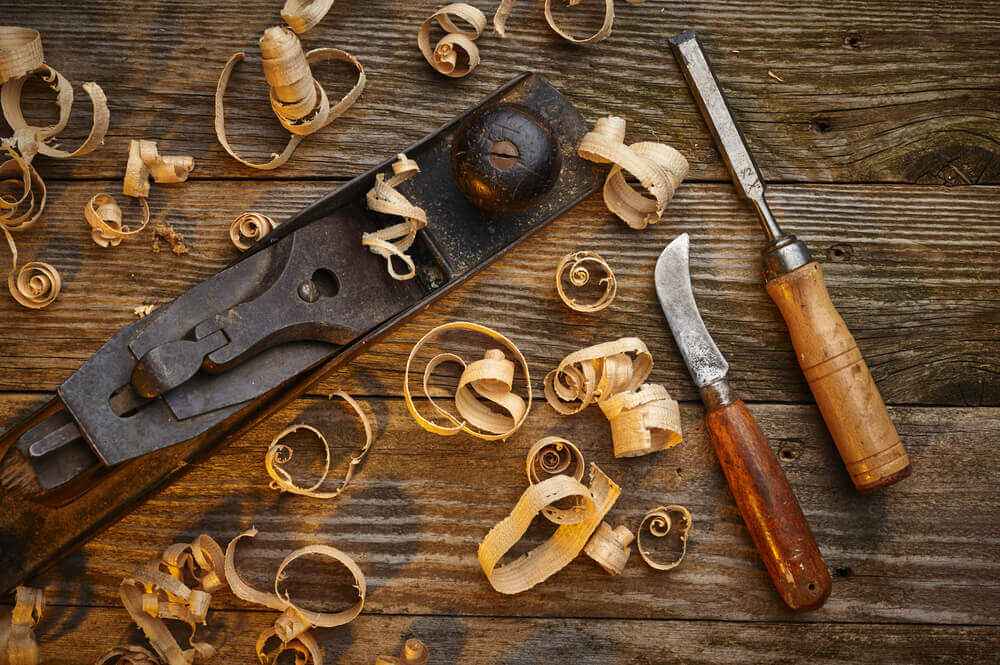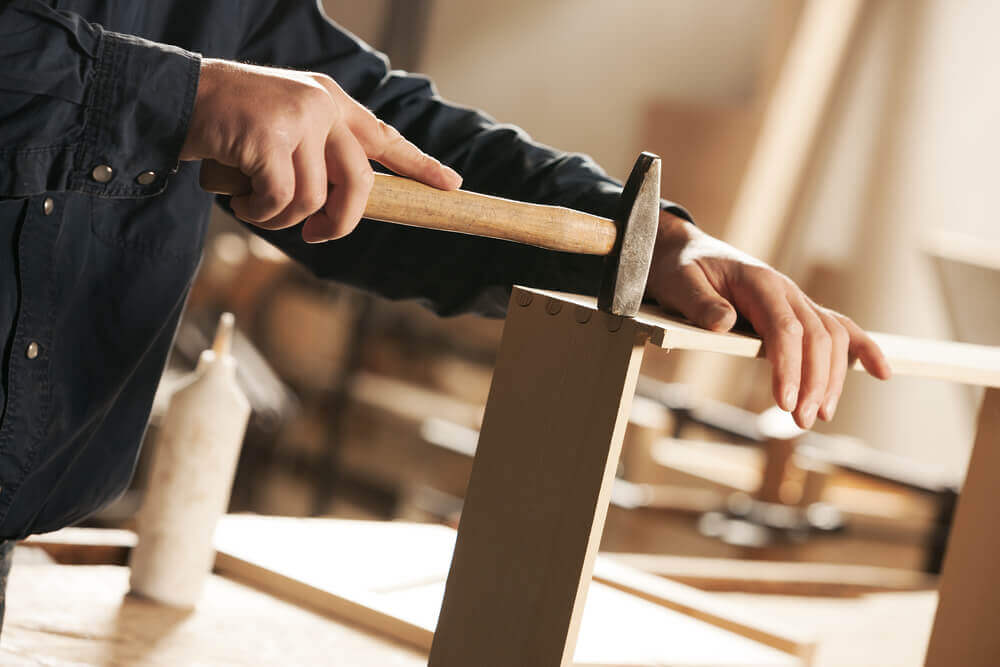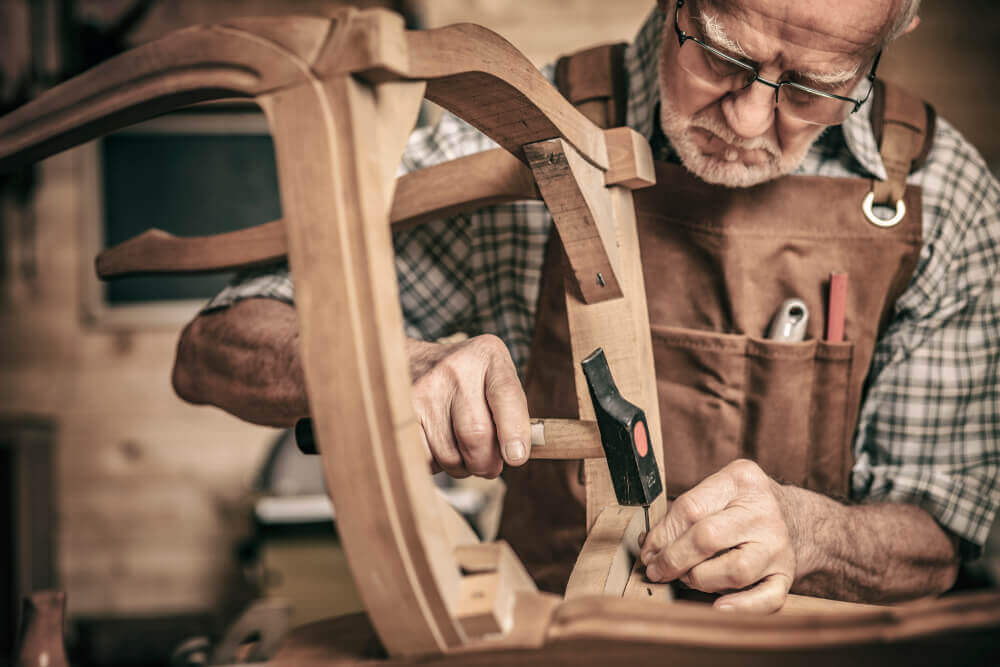Tackling Carpentry at Home - Working with Wood

Not too handy? Don’t worry, read our post and discover that carpentry isn’t that complicated. Assembling pieces and repairing furniture— joining pieces of wood, fixing a broken chair or tinkering with a drawer that doesn’t close well– are all home tasks that you can do.
Anyone can take care of small repairs and simple wood projects. You just need to know the basics as well as the tools and materials for your projects.
Types of wood

There are two groups of wood: softwood, such as pine or fir, and hardwood, like beech, walnut or oak. The first group are more affordable but less resistant and are the main type used in furniture production.
On the other hand, the second group are pricier and more resistant. They’re common choices for interior and exterior cabinets, flooring and exterior construction.
Additionally, there are also tropical woods, which are more expensive. However, they withstand humidity very well. People also use pre-fabricated boards: plywood, chipboard, and fiberboard… They’re much cheaper and easier to work with than natural options.
Carpentry tools

Nailing, drilling, and sawing are a handful of carpentry tasks that you can do at home to repair something. Thus, you’ll need to have a hammer, screwdriver and electric or manual saw on hand.
But the list goes on. You’ll also need a chisel and a gouge for leveling or working wood. In addition having a drill, awl, rasp, electric or manual sander, scraper and wood glue will come in handy. So, let’s get to work!
Joining techniques – fitting two pieces of wood together

If you need to join two pieces of wood together, you can use wood jointing accessories in addition to basic screws and nails to get the job done.
There are many joinery accessories and tools you can use for the job: triangular pieces for reinforcing boxes or drawers, T-pieces for frames, or sliding tools for extendable action.
But you can also join wood without using any kind of joint. Instead, simply fit the wood pieces together. It’s a clean, sturdy solution that you can reinforce with wood glue. Here are three basic methods:
- Mortise and tenon joint: make a tenon, or protruding piece of wood, that fits into the mortise, or hole, of another piece.
- Dovetail joint: make tails and pins on the ends of the pieces of wood to interlock.
- Dado joint: dado joints work by cutting a groove deep enough for another piece of wood to fit into.
Working with wood – repairing furniture

Before you throw out a broken or deteriorated piece of wooden furniture, look at your options. Worn out furniture almost always has an alternative use.
For example, you can easily fix any chair with a broken leg. First, determine if it’s a clean, straight break or not. If so, you can simply apply wood glue and wrap the area to secure it until the glue is completely dry.
As for diagonal breaks, glue the two pieces together and then, nail dowels in the opposite direction. Make sure to do it carefully so as to not damage the wood.
Jammed drawers are another common repair job. If you have one on your hands, the best way to fix it is by covering the tracks with wax or glycerin soap. But if your drawer tracks are metal, use a little petroleum jelly instead of wax.
And don’t forget! Work with precision and patience for solid results.
Not too handy? Don’t worry, read our post and discover that carpentry isn’t that complicated. Assembling pieces and repairing furniture— joining pieces of wood, fixing a broken chair or tinkering with a drawer that doesn’t close well– are all home tasks that you can do.
Anyone can take care of small repairs and simple wood projects. You just need to know the basics as well as the tools and materials for your projects.
Types of wood

There are two groups of wood: softwood, such as pine or fir, and hardwood, like beech, walnut or oak. The first group are more affordable but less resistant and are the main type used in furniture production.
On the other hand, the second group are pricier and more resistant. They’re common choices for interior and exterior cabinets, flooring and exterior construction.
Additionally, there are also tropical woods, which are more expensive. However, they withstand humidity very well. People also use pre-fabricated boards: plywood, chipboard, and fiberboard… They’re much cheaper and easier to work with than natural options.
Carpentry tools

Nailing, drilling, and sawing are a handful of carpentry tasks that you can do at home to repair something. Thus, you’ll need to have a hammer, screwdriver and electric or manual saw on hand.
But the list goes on. You’ll also need a chisel and a gouge for leveling or working wood. In addition having a drill, awl, rasp, electric or manual sander, scraper and wood glue will come in handy. So, let’s get to work!
Joining techniques – fitting two pieces of wood together

If you need to join two pieces of wood together, you can use wood jointing accessories in addition to basic screws and nails to get the job done.
There are many joinery accessories and tools you can use for the job: triangular pieces for reinforcing boxes or drawers, T-pieces for frames, or sliding tools for extendable action.
But you can also join wood without using any kind of joint. Instead, simply fit the wood pieces together. It’s a clean, sturdy solution that you can reinforce with wood glue. Here are three basic methods:
- Mortise and tenon joint: make a tenon, or protruding piece of wood, that fits into the mortise, or hole, of another piece.
- Dovetail joint: make tails and pins on the ends of the pieces of wood to interlock.
- Dado joint: dado joints work by cutting a groove deep enough for another piece of wood to fit into.
Working with wood – repairing furniture

Before you throw out a broken or deteriorated piece of wooden furniture, look at your options. Worn out furniture almost always has an alternative use.
For example, you can easily fix any chair with a broken leg. First, determine if it’s a clean, straight break or not. If so, you can simply apply wood glue and wrap the area to secure it until the glue is completely dry.
As for diagonal breaks, glue the two pieces together and then, nail dowels in the opposite direction. Make sure to do it carefully so as to not damage the wood.
Jammed drawers are another common repair job. If you have one on your hands, the best way to fix it is by covering the tracks with wax or glycerin soap. But if your drawer tracks are metal, use a little petroleum jelly instead of wax.
And don’t forget! Work with precision and patience for solid results.







